

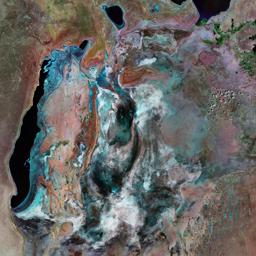
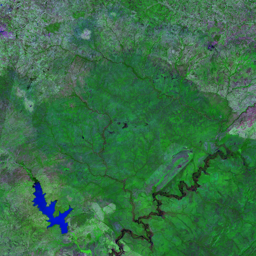



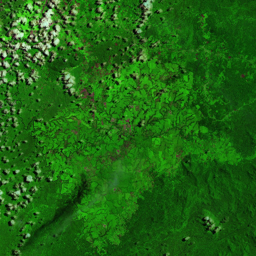

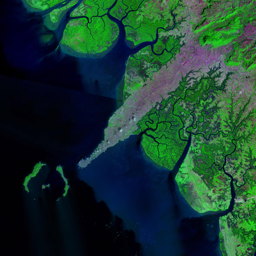
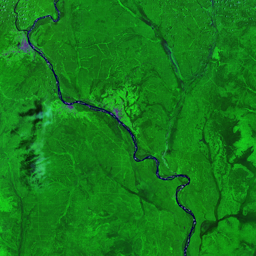
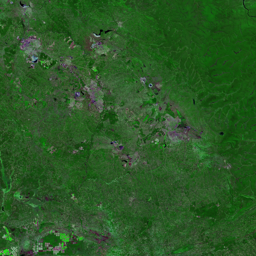
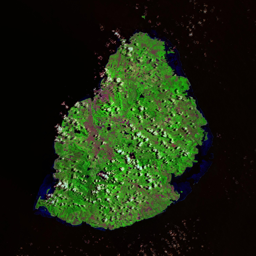
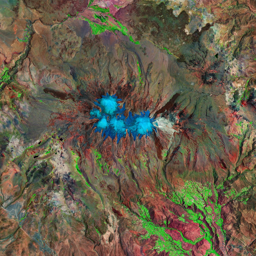
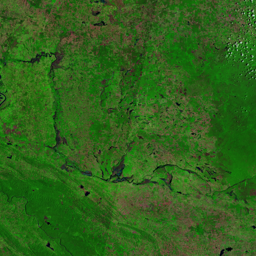
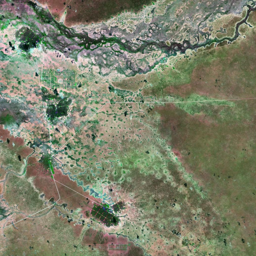

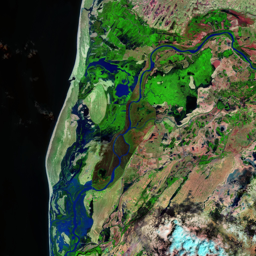


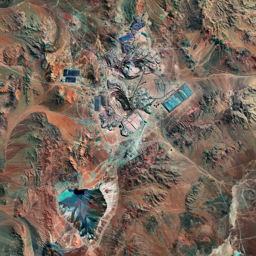
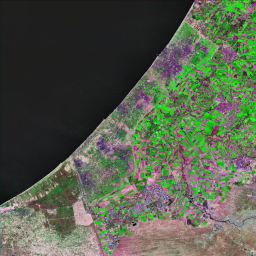






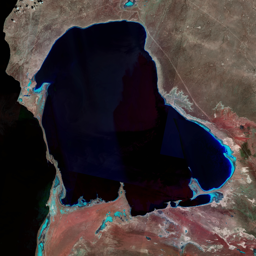
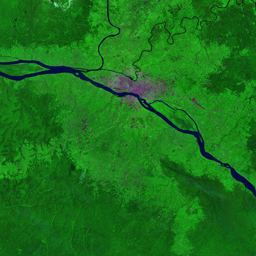


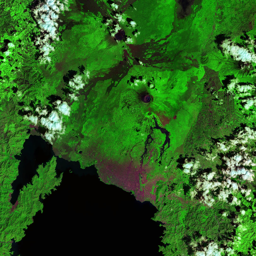

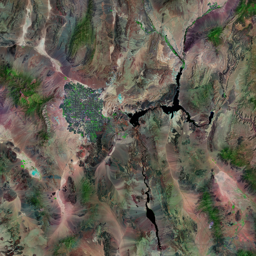
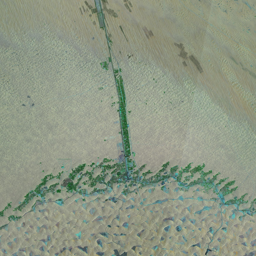
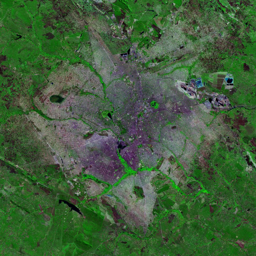



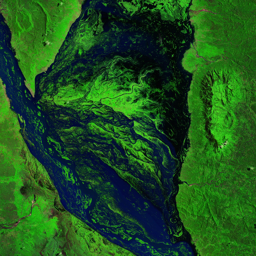







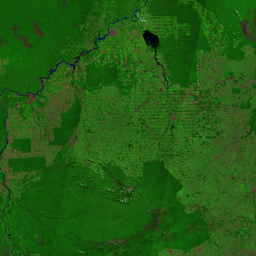
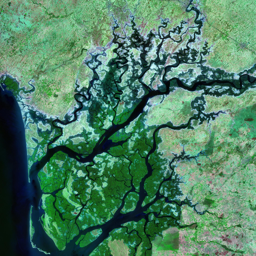

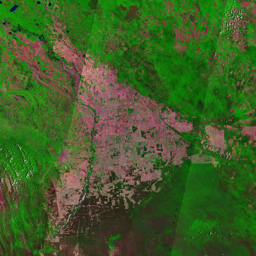
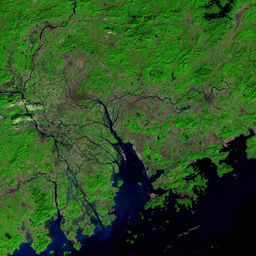

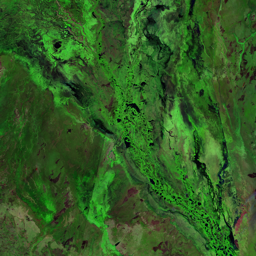

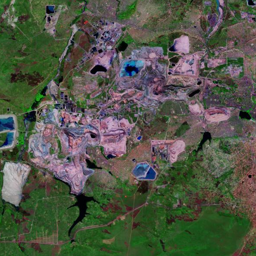
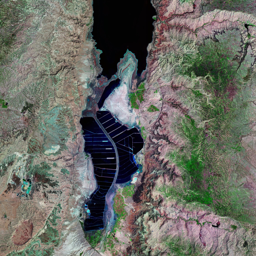
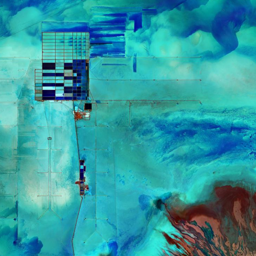
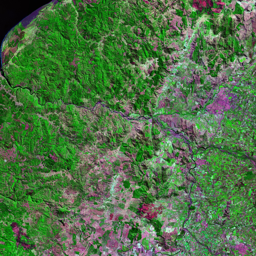


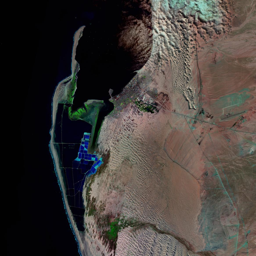

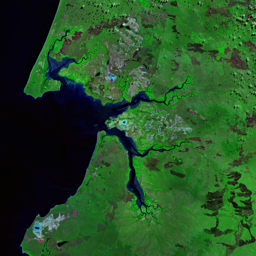
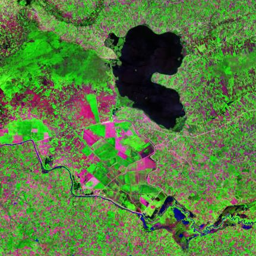
Liwa is located in central Abu Dhabi Emirate on the northern edge of the Rub al Khali or 'Empty Quarter' desert. Liwa is the largest oasis in the Arabian Peninsula; the red mega-dunes reach 150 m, providing a stark contrast to the surrounding desert. Between the massive sand dunes are sabkhas (salt flats), which form where the underground water table meets the Earth's surface - the sabkhas are visible. Due to the availability of water, this oasis was traditionally settled and continues to support a thriving population. Fifty communities now lie along the Liwa Crescent, which stretches 120 km from east to west. In an effort to boost the UAE's agricultural sector and achieve food self-sufficiency, this area developed rapidly in the past four decades. The UAE increased its agricultural area by 400 000 ha over a 40-year period through massive afforestation schemes, date palm cultivation, and nursery projects. Agriculture in Liwa is dominated by date palms and a variety of vegetable and fruit crops. Groundwater is the main source of water for agriculture; however, irrigation expansion, persistent drought and decreased rainfall have led to rapid declines in groundwater levels. Increased salinity and agricultural pollutants are contaminating the groundwater, causing some wells in Liwa to be discontinued. Sound management practices are being implemented to avoid depleting the groundwater resource, which, at current abstraction rates, is projected to be depleted in less than 30 years.
Use shift + scroll to zoom the map
Use shift + scroll to zoom the map